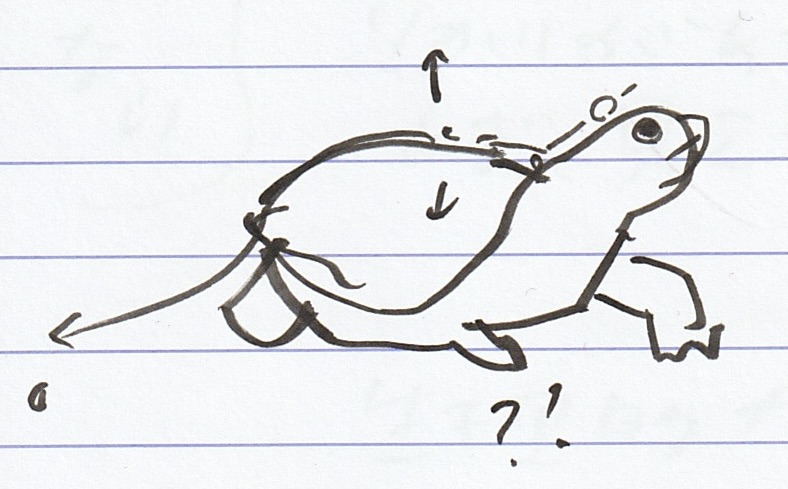You can read a poetry Love is Considerable (2022) and an illustration One Day I Met the Rubber Duck on The Shore (2022):here
at Migrazine 2023/1
You can read a poetry Love is Considerable (2022) and an illustration One Day I Met the Rubber Duck on The Shore (2022):here
at Migrazine 2023/1
The performance What happens during reading? with Ann Cotten shown at the group exhibition AN DER TAFEL, Medienwerkstatt Wien, Vienna.

Under the restriction of mobility, you’ve become out of the candidates in the Triage A to D? Such a kind of person might like a silkscreen work dearvolcanolovers,(
written by Kanako Tada
Vertical River
As for the action itself becoming one genre, sculptures and paintings stand on the same horizon. Are ‘sculptors’ and ‘painters’ a type of artisans profession, do they have a possibility to subvert, on the brink of defeat, the art scenario that comes by a retroactive artist inhibition?
“Vertical River” does an overturning such a symmetry story.
Artist’s strategy with taking the position between a sculptor and a painter should be over. In a word, “Vertical River” is beginning of the struggle and the resistance to a genre. The artists heave up “Vertical River” to press forward a discourse which has been trailed in only about mediums and styles.
In his drawing “Nude Seen From Behind, Arms Raised”(n.d), Auguste Rodin’s frameworks engage with paper work and sculpture to depict a dystopian world being developed.
Yein lee’s work, an organism, is more inorganic than apparatus. The stuffed creatures also come back like zombies not to accept any identity other than ‘being’. Just like the sculptor Matthew Monahan who mentioned “iconography images of the disaster”, stereotype corpses and bronze statues are mingled.
She deliberately internalizes a body of a painter, anyhow accomplishing her appropriate persona as a painter and the traces of painter figure. Such methods with her physicality lead a critic to a natural awareness of her entering point to art as a painter.
The statue looks like it is crying in the rain. Our hypocrisy slightly brings such a silent narrative. Her work dissolves our artificial imagination. The fragments do not try to reunion anymore, just floating on the water.
Steps go fast, the elevator is just a right size for the sculpture and the members who adopt to carry it. Shuvo Rafiqul ’s “Transport” (2019) is a foremost work of his new series.
There is nothing to vain in the draft that collapses and builds again. It can be destroyed, because we have already an innovated upshot once. All his decisions address a respect to an artist’ limitation. Lives die after they born.Concurrently,artworks would have been transported-displayed-preserved, for example Kurt Schwitters(1887- 1948) innovated “Merzbau”(1933) which no longer exists. However, “Transport” is here, involving some stabilities by attempting reconstructions. In order to be autonomous as a sculpture, it ought to fulfill the role of an architect.
The artist’s autonomy also helps to carry this work to “Vertical River”. A city is an over-all of paintings when flying birds look down at. “Transport” has an interactive relationship with the city, so it’s a transformational white lines and gaps between sites from the sky.
His work turns audience into witnesses, in doing so it preserves the situation itself by capturing an act of tightening and building. Artists and museums function as travelers.
Audience is educated to enjoy an invisible situation. However, “Transport” continues being as a sculpture.
Fragments of black-and-white images, like bullets left on the wall, are the evidence that we stay in the ruin, as we try to keep away from the drama in the museum.
Rini Mitra‘s five drawings “black line”(2019) consist of white cardboards. It is a minimal gesture with a simple outline to build up circumstances that bodies and objects are interconnected. And the lines are likely floating from the paper, as a string is laid. The lines are trying to connect to the next room.
It reminds us of Julian Schnabel’s “The Diving Bell and the Butterfly”(2007). A main character communicates only through blinks because of his Jean-Dominique Bauby locked-in syndrome.
He has been trapped in his body as a container. We assume our subjectivity only exists in our body, but her work suggests that ourselves are drifting in our environment. She expands her realization through her artist body.
Rini Mitra collects a light refracted through every angle to design a solid figure. Her gaze, as an apparatus, scans a situation. Her practice presents the equality of body and humanity.
Jakob Kolb achieves the rituals that objects and materials narrate, to overcome a rational dichotomy. Mimesis gets entangled with his concept. There are his flourish ways of breaking, dissolving and tearing, which are construction/deconstruction in a way. The fragments scatter from high and low, stepping from an image of organic and inorganic across a stream.
Kanako Tada’s “daily necessities”(2019) embodies an intersectional exchange between art and decoration.
Her idea is fundamental; daily tools or ready-mades come up to art, vise-versa art turns into a daily or environmental decoration. Rather, such an exchange is a natural liquidity. “daily necessities” draws her experience as a painter, making her represent how we treat ego which belongs to our labor, ideality, and absent/present.
There are two organizations: pieces of mosaic in front of the sink; pieces on the wall in the exhibition space. They are subtly looking around, breathing, and coexisting with all the artworks in the space.
text and curated by Kanako Tada
reference: https://tadakanako.net/vertical-river/
drive in a stake for a remembrance
water, changes color with the weight of the leaves
like an ant fighting with a rotten fruit
poetry for “daily necessities”(2019)